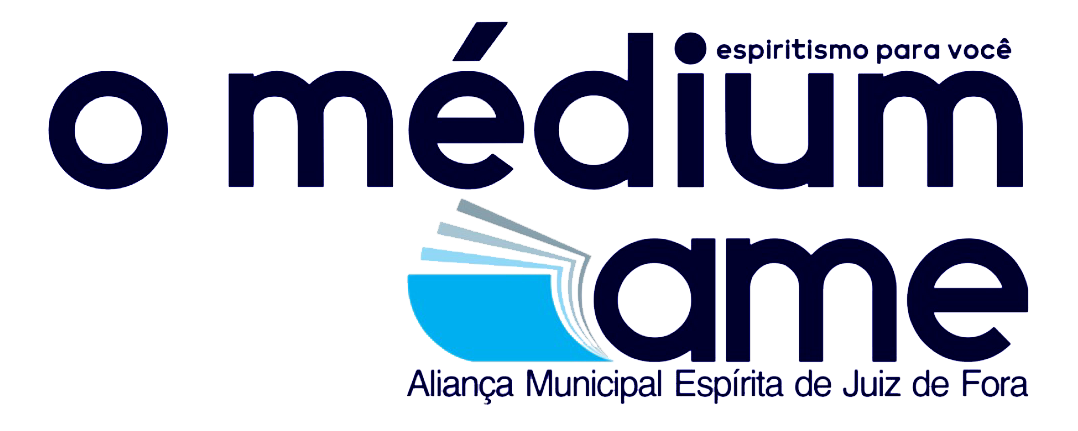Chico Xavier and prophetic mediumship: some examples
Ricardo Baesso de Oliveira
Prophetic mediums, according to Kardec, are those who receive revelations about future events of general interest and are entrusted with conveying them to humanity as instructions.
Chico Xavier’s mediumistic work anticipated several advancements in scientific thought, which allows us to hold him as a prophetic medium. This article will examine three remarkable revelations related to the biological dimension.
a) The theory of morality as the development of social instincts
For most of the 20th century, a significant part of scientific thought was influenced by the Roman proverb “man is a wolf to man”, popularized by Thomas Hobbes. According to this view, human beings are inherently evil and immoral. Evolution is seen as the result of a ruthless and selfish process of survival of the fittest, where only self-interest prevails. Any goodness in humanity, if it exists at all, is attributed to culture and human institutions. Left to their own instincts, people would self-destruct, as their very nature dictates.
In recent years, this theory has lost its dominance. It is now believed that human nature also includes a social instinct, expressed through cooperation, empathy, and compassion. This instinct is already present in various animal species, suggesting that morality may also be a consequence of evolution.
As the influential biologist Stephen Jay Gould, once said:
“Why should our nastiness be the baggage of an apish past and our kindness uniquely human? Why should we not seek continuity with other animals for our ‘noble’ traits as well?”
According to the theory of morality as a development of social instincts, there is continuity between human morality and the social tendencies observed in animals. Moral tendencies are seen as a product of evolution. Empirical evidence supporting this view includes the emotional and intuitive foundation of morality, the activation of brain areas involving emotions during moral dilemmas, and the presence of behaviors reflecting empathy and a sense of justice in great apes and even in babies under two years old—before socialization takes place.
André Luiz’s prophetic statement is that the instinct of solidarity prefigures pure love. Instincts are natural impulses that drive to act involuntarily, without relying on reason or intelligence. To prefigure something means to represent it in advance. Therefore, André Luiz shows that the qualities that bring greatness, beauty, and spirituality to human actions—altruism, compassion, and love—have evolved from an instinct: the instinct of solidarity. This was written in 1958, at a time when the idea of an innate moral instinct in human nature was not even considered.
b) Review of concepts related to the evolution of Homo sapiens
It was once believed that, millions of years ago, Africa gradually became drier. The landscape, once dominated by tropical forests, began to give way to savannas and deserts. This environmental shift presented a dilemma for the apes of the time: remain in the forests or “descend from the trees” in search of a new habitat.
The ancestors of chimpanzees, gorillas, gibbons and orangutans stayed put, giving rise to today’s primates. The ancestors of the other apes dared to leave the forest and compete with the other terrestrial animals, already adapted to the ground. It was a risky venture, but a fortunate one: these apes gave rise to man.
The ancestors of chimpanzees, gorillas, gibbons, and orangutans chose to stay in the forests, evolving into the primates we know today. Meanwhile, the ancestors of other primates left the trees to compete with already well-adapted terrestrial animals. Though risky, this transition proved successful: those primates eventually gave rise to humans.
Paulo Dalgalarrondp says the “descent from the tree” hypothesis has been questioned by contemporary paleoanthropologists. So what is it that they say?
The main candidate to be the starting point from which the split between apes and human descent occurred, the missing link between Homo sapiens and the great apes, was nicknamed Toumai. Its almost complete skull was found in Chad, an African country, in 2001 and is probably 7 million years old. Toumai meets the criteria to be included as a member of the human lineage: in addition to strong indications of bipedal posture (shape of the femur, pelvic bones, spine and back of the skull), the presence of small canines and large molars (usually with thick tooth enamel).
The leading candidate for the point of the split between apes and human lineage—the so-called “missing link” between Homo sapiens and the great apes—was nicknamed Toumai. His nearly complete skull was found in Chad, Africa, in 2001 and is estimated to be around 7 million years old. Toumai meets the criteria to be classified as part of the human lineage: in addition to strong indications of bipedal posture (evidenced by the shape of the femur, pelvic bones, spine, and the back of the skull), and also possessing small canines and large molars, often with thick dental enamel.
The region of Africa where Toumai’s skull was found is now a desert area, but it wasn’t like this 7 million years ago. At that time, it consisted of a huge forest, with swamps and a large lake of around 400,000 km². This fact does not justify a “descent from the tree” due to a change in the habitat of the primates of the time, and paleoanthropology must seek another explanation for the bifurcation of the primates and the consequent appearance of human ancestors.
The region of Africa where Toumai’s skull was discovered is now a deserted area, but it was not like this 7 million years ago. At that time, it was a vast forest with swamps and a large lake covering approximately 400,000 km². This fact challenges the idea that early primates “descended from the trees” due to a habitat change. As a result, paleoanthropology must seek another explanation for the divergence of primates and the subsequent emergence of human ancestors.
Curiously, Emmanuel, referring to the subject, clarifies:
“Calling to mind the latest eminent naturalists, who have meticulously studied the transcendental questions of evolutionism,we are compelled to clarify that there was never a “descent from the trees” per se at the beginning of human evolution.During the age of the great malleability of the physical elements,the spiritual powers that oversee the earthly phenomena under the guidance of the Christ established a definitive lineage for all species, in which the spiritual principle would undergo the process of its purification on its way toward rationality.”
c) Epigenetics
Recognizing environmental influence on gene function and expression—challenging the mistaken belief that genes alone determine our destiny—has led to the emergence of a new field of study known as Epigenetics. This field investigates the mechanisms through which factors external to the nucleotide sequence of DNA—such as the environment—intervene in gene expression, affecting how cells access, interpret, and utilize genetic information.
Several epigenetic mechanisms have been identified. The presence of a methyl group (CH3) attached to a DNA segment constitutes an epigenetic modification. Another example is the addition of an acetyl group (COCH3) to histones—proteins associated with DNA—also classified as an epigenetic alteration. These chemical modifications do not change the gene sequence itself but influence its expression. This can help explain puzzles such as the sometimes striking differences between identical twins. Despite sharing the same genome, they accumulate distinct epigenetic marks throughout life.
The experiences we go through—even in the womb—the eating habits we develop, the consumption of tobacco and alcohol, and even being raised by caring parents can all leave epigenetic marks on our genes. These marks can silence previously active genes or activate others that were once repressed. This process helps explain how different environments shape genetically identical individuals into unique people. Similarly, it explains how cells in our body, despite sharing the same DNA, develop distinct forms and functions.
In 1958, when Chico received the book Evolution in Two Worlds, these ideas were completely absent. In that book, we believe that the concept of epigenetics was subtly introduced. Carlos Mourão Júnior, professor of physiology at the Federal University of Juiz de Fora (UFJF) strongly believed that André Luiz related the term biophore to the methyl and acetyl groups mentioned above, which acting on genes could interfere with their expression:
In 1958, when Chico Xavier received the book Evolução em Dois Mundos, these ideas did not yet exist. However, we believe that the concept of epigenetics was subtly introduced in this work. Carlos Mourão Júnior, a professor of physiology at the Federal University of Juiz de Fora (UFJF), strongly believed that André Luiz associated the term biophore with the methyl and acetyl groups mentioned earlier which by acting on genes, could influence their expression:
“[…] interpreting chromosomes as characters upon which the mind inscribes, within the cellular corpuscles that serve it, the dispositions and meanings of its own destinies—characters composed of genes, just as lines are formed by dots—genes interwoven with elements called biophores, and considering these biophores at these points as the ink granules that cover them. […]”
André Luiz relates the chromosomes, where the genes are found, to lines containing dots, with the biophores acting on them, in other words, the epigenetic marks that interfere with gene expression.
Lyderson Faccio Viccini, professor of genetics at UFJF, also sees the idea, expressed in the text, of epigenetic mechanisms as resources for the intervention of Spirits in reincarnation biology. He believes in the possibility that the Spirit, through its mental radiation, can also function as a natural epigenetic mechanism, participating, just like the environment, in the expression of an organism’s genes. The incarnate individuality, through its powerful radiations, would project itself inside the cell, in the set of genes and proteins, expressing its spiritual identity, its personal characteristics and its evolutionary needs. Similarly, disincarnate spirits could interfere in human biology:
André Luiz relates chromosomes—where genes are found—to lines containing dots, with biophores acting upon them, which can be understood as epigenetic marks that influence gene expression.
Lyderson Faccio Viccini, a genetics professor at UFJF, also interprets this passage as referring to epigenetic mechanisms as a means for Spirits to intervene in reincarnatory biology. He believes in the possibility that the Spirit, through its mental radiations, could act as a natural epigenetic mechanism, influencing gene expression just like environmental factors do. The incarnated individuality, through its powerful radiation, would project itself into the cell, interacting with genes and proteins to express its spiritual identity, personal traits, and evolutionary needs. In the same way, discarnate Spirits could also interfere with human biology:
“[…]The creature is subjected to the law of heredity, yet has the right to alter its fundamental dispositions within a fair limit, according to its merit. To help others in their ascent toward greater evolutionary achievements, it receives precious assistance from the Organizers of Progress during the mitosis of the zygote that will grant it a new body in the world. Every chromosomal exchange within the uterine vessel is invariably overseen by ordinary or extraordinary magnetic agents, depending on the nature of the existence that is being shaped or reshaped, with the keys of heredity serving their purpose. […]”
________________________________________
i.The Mediums’ Book, item 190
ii.Primates and philosophers, Frans de Waal
iii.Evolution in two worlds, part I, chapter 10
iv.Evolution of the brain, Paulo Dalgalarrondo
v.On the path to light, ch. 2
vi.Evolution in two worlds, part I, chapter VII
vii.Evolution in two worlds, part I, chapter VII



